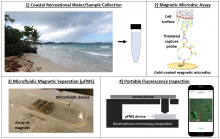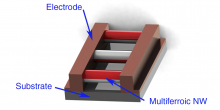Drs. Yoon, Xie, Arnold, Sheplak lead research focused on advanced electromagnetic and photonic devices and systems. Examples include micro-/nano machined metamaterials, RF components, optical transducers, and wireless systems. Metamaterials--artificial materials designed for microwave, terahertz, or optic frequency bands--are being developed to enable compact radio frequency (RF) components; multiband microwave filters, resonators, and couplers; subwavelength lenses; and cloaking devices. Additional effort is focused on micromachined electromagnetic components such as antennas, waveguides, inductors, and transformers. Optical-based sensors/actuators/systems are being leveraged for measurements in harsh environments or for in vivo biomedical imaging. Lastly, wireless sensors and systems are being explored for remote sensing and wireless power transmission.







